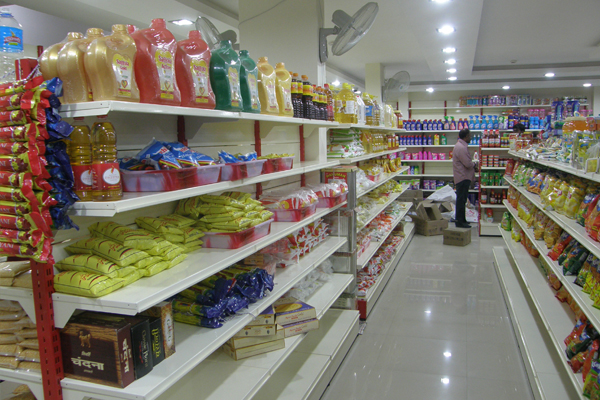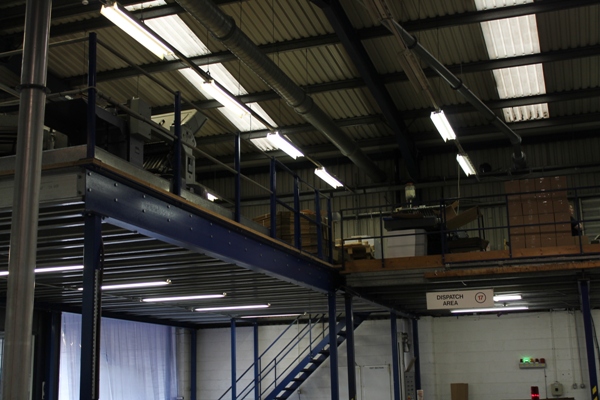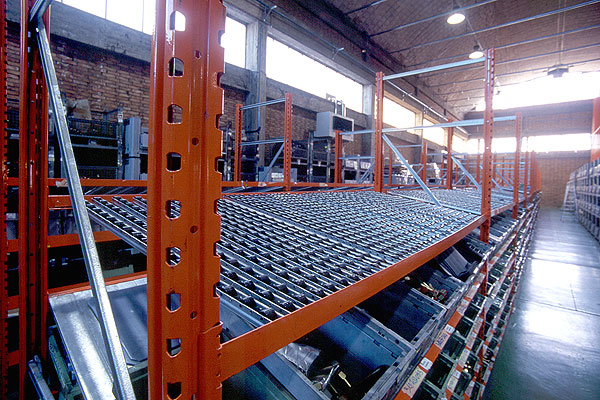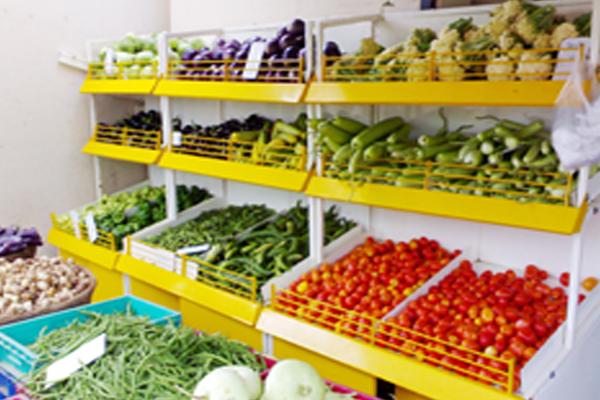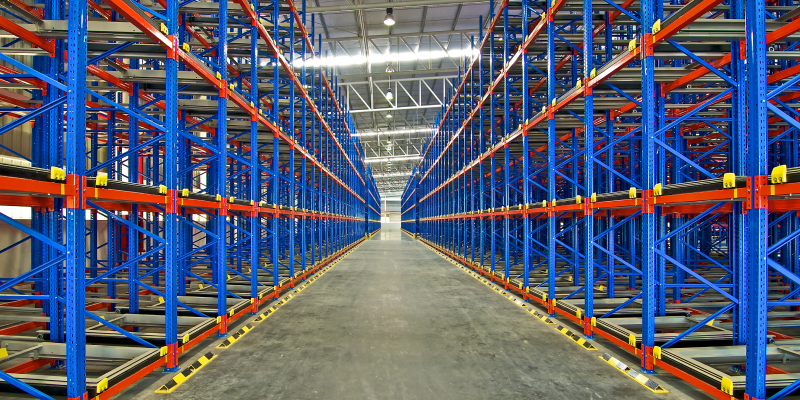A Beginner’s Guide to the Power of Pallet Racking System
Pallet racking solutions have sparked a storage revolution in the dynamic world of warehouses and distribution centres. They not only free up space but also customise the storage aspirations of any business. You have to understand that no two racking requirements are the same. Therefore, one needs to focus on the three main factors while choosing pallet rack manufacturers or investing in a pallet racking system. They are the size, type of inventory and business operations.
Pallet racking is a type of storage that uses available vertical space to store pallets of goods in horizontal rows on numerous floors, improving storage density. Generally, a forklift truck loads and unloads pallets onto the racks.
Pallet racking systems vary in shape, and the systems’ primary function varies depending on the type. While some pallet racking systems are made to increase storage density, others are made to make product retrieval easier. Therefore, they are a useful asset to any kind of warehouse.
Picking the ideal pallet racking system is like hunting for a needle in a haystack. Well, don’t worry! This article will take you on an exciting journey through the variety of pallet racking options. We’re going deep into each kind, covering everything from game-changing advantages to staying real with the disadvantages as well.
Top Three Pallet Racking Systems – Benefits, Drawbacks & Applications
Selective pallet rack
This is the most common kind of pallet rack. It was created to get goods off the ground and gain extra space. Users can access the pallet loads without moving other pallets, hence the name “selective racking.” And it doesn’t need specialised lift trucks because it functions well with any kind of forklift. It is affordable, adaptable, and simple to customise to meet your unique needs. It works well if your storage requirements involve frequent access to products and you don’t have a high number of pallets per SKU.
Pros
- Selective pallet racks are the most widely used and give access to every single pallet in the warehouse directly.
- Affordable as it has the lowest price per square foot.
- Permits effortless stock management.
- Available for custom fit in a wide range of sizes, capacities, and configurations.
Cons
- Decreased storage density.
- Wider lanes are necessary for forklifts to manoeuvre.
Applications- General warehousing, manufacturing, low-turnover retail and food handling operations.
Double deep pallet rack
One row of selective racking is placed beneath another in this system. A double deep pallet rack is the most affordable method of building high-density storage. It is ideal if you require higher storage densities, have a low to moderate number of SKUs dispersed in medium to high amounts, or have a medium to long lifespan product.
Pros
- It has a larger capacity for storage than the selective pallet racks.
- Free up storage space by eliminating unused aisles.
- Easily convertible between selective and deep.
- Simple to move and relocate.
- It becomes more cost-effective due to increased space utilisation.
Cons
- Need specialised forklifts and double deep reach vehicles to access the pallets.
- People have a poor view of the rear storage pallet, particularly at higher altitudes.
Applications- Dry storage, distribution centres, manufacturing, paper, cold storage, F&B, and general warehousing.
Narrow aisle pallet rack
The narrow aisle pallet rack is an excellent alternative if you want to save the most space possible. The pallet racks are loaded and unloaded using a side loading forklift. As a result, the aisles may be very small—between 5 and 7 feet wide—and the racks can be positioned closer together. Since the order picking equipment picks from the pallets, this type of pallet rack does not require pick and deposit stations.
Pros
- Utilises a space’s vertical height to minimise wasted space
- Maximises storage by decreasing the aisle space.
- Forklifts will be able to reach every pallet, thereby providing 100% accessibility.
- Can be tailored and personalised to fulfil space and volume requirements.
Cons
- Needs for a particular kind of forklift, making it expensive.
- Decreased flexibility because you often must store the exact same SKU.
Applications- Ideal for warehouses that want to increase their storage density and have many SKUs with modest volumes per SKU.
Drive-in pallet rack
A high level storage system called drive-in pallet racking has a single aisle for forklifts to enter and exit to load or unload items. Forklifts drive right into the shelves, position or pick up the stuff, and then drive away. Pallets are filled and recovered from the front side of the rack. This system helps in meeting your unique demands with several components. It can also accommodate various depths and heights.
Pros
- Pallet locations are increased for higher-density storage.
- Offer better control over facility exit and entry.
- Requires reduced warehouse space.
- Reduces aisle width.
- Most economical system.
Cons
- Unsuitable for a facility that produces a variety of goods.
- The limitation in pick selectivity creates a hurdle when it comes to effectively rotating time-sensitive items.
Applications- General warehousing, retail products with high turnover, and high-volume storage of identical products.
Drive-through pallet rack
Another kind of small pallet racking connected to drive-in pallet racking is drive-through pallet racking. Similar to drive-in racking, drive-through racking uses various sides for unloading and loading. This provides greater versatility in product rotation and inventory access while marginally reducing storage density. It is mainly utilised in warehouses with first-in-first-out inventory management systems.
Pros
- Shorter storage and retrieval times.
- Faster worker productivity and efficiency.
- Greater storage capacity with high-density storage.
- Uniform loading in a small storage area.
- Energy-efficient since forklifts don’t need to go far to pick up and place loads. Thereby, it saves a considerable amount of fuel.
Cons
- Forklift drivers have to be skilled to operate through this system.
- Not ideal for high inventory turnover.
Applications- Beverage and chemicals sector, freezer/cooler systems used to store flowers or meat and general warehousing.
Cantilever pallet rack
Materials like lumber, steel pipes, wood and textiles that are too long, heavy or bulky to fit on pallets are stored using a cantilever racking system. In contrast to pallet racks that contain vertical uprights, cantilever racking has many movable projecting arms that allow for horizontal storage. It is a robust, secure, affordable storage alternative with numerous customization possibilities.
Pros
- Capacity varies from moderate duty to heavy duty.
- Faster storing and retrieval of bulky, lengthy, or asymmetrical products.
- Strong and secure options for indoor and outdoor storage.
- Simple to install and configure.
- Without vertical obstructions, this system can stack materials horizontally.
Cons
- Installing and designing this kind of racking system will cost more money.
- Needs a gap in the middle of the racks for material-handling machinery and forklifts to operate.
Applications- It is best for storing lengthy, hefty objects like plumbing, timber, bars and steel sheets.
Multi-tier pallet rack
A pick module structure, often known as multi-tier racking, aids with using the vertical space in better ways. They feature many levels linked together by stairs for hand pick up and loading. Multi-tiered pallet racks produce higher density picking for various levels. A conveying equipment is normally needed to move the selected commodities out of the system.
Pros
- Maximum usage of vertical warehouse space.
- Optimum use of surface, height, and storage capacity.
- Adaptable to various containers or item sizes.
- Direct accessibility to SKUs without utilising industrial equipment.
- Enclosed and safe, ensuring worker protection.
Cons
- Expensive when compared to other racking systems.
Applications- Small items, pharmaceutical products, fasteners and automobile parts.
The Bottomline
Pallet racking systems are a storage revolution in the world of warehousing. By now, you would have understood that these systems are not one-size-fits-all; they offer customised solutions while freeing up space. Contact Donracks, one of the best rack manufacturers in India, if you want to upgrade your warehouse with the best pallet racking system

